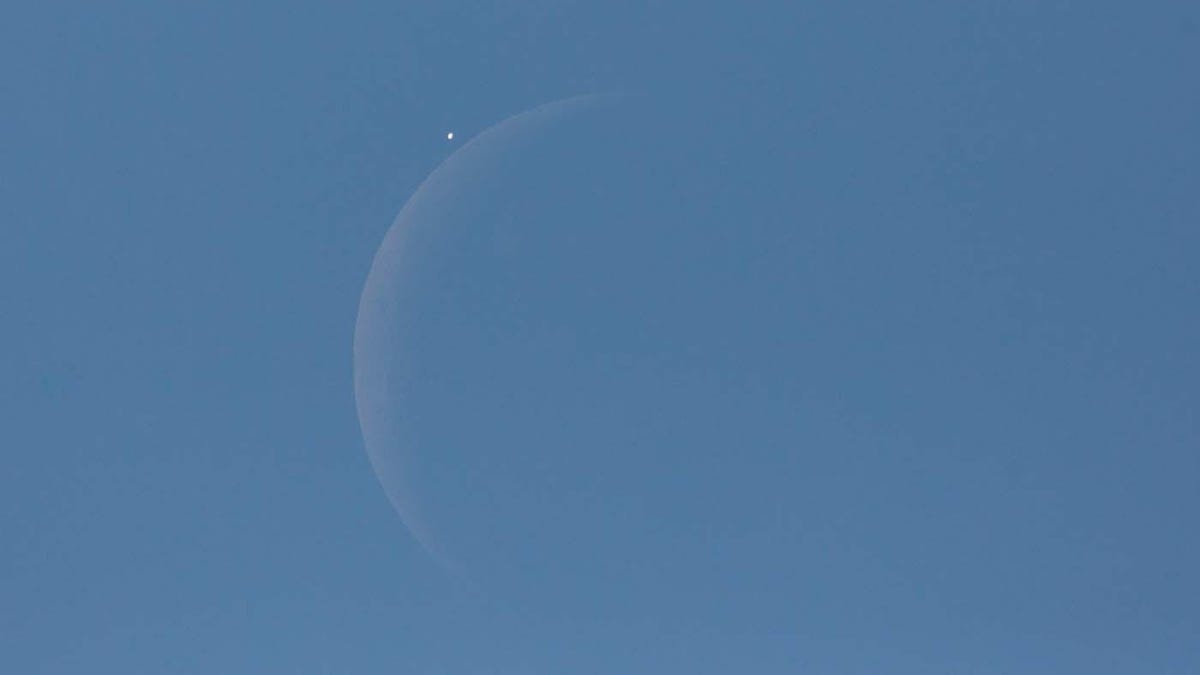Look up! The moon is in very rare formation right now
In the latest lunar rarity since August's total solar eclipse, the moon is busy covering for a half dozen other heavenly bodies in a single day.

Venus is seen next to the crescent moon during the daytime, prior to the start of occultation on Dec. 7, 2015, in Washington, DC.
The moon on Monday is playing a role similar to the one it did during the epic American total solar eclipse last month, but this time it's sliding between the Earth and not just one but six celestial bodies.
When the moon passes in front of something besides the sun, it's called an occultation. Sky-watchers on Monday are being treated to lunar occultations of three planets, one star and two asteroids in a single day, according to the US Naval Observatory.
In Monday's early hours, the moon passed over Venus and the bright star Regulus. Some savvy amateur astronomers in Asia and Australia were able to catch the sight:
Almost! Venus Moon conjunction about 20min before occultation, before the clouds came! 18 Sep 2017.https://t.co/UOqLvOJ4f4 pic.twitter.com/F1asc5oIxJ
— Shahrin.Ahmad (Shah) (@shahgazer) September 18, 2017
An occultation of Mars is also happening, but is largely only observable from parts of the Pacific Ocean and the coast of Mexico and Central America. It's also happening in daylight hours, so it will take some impressive equipment and planet-spotting skills to see it.
If you're in the Philippines, you might be able to spot the moon covering Mercury around dawn Tuesday morning.
In addition, professional astronomers will keep an eye out for two large asteroids named Hertha and Nephthys that will also be covered by the moon.
This particular alignment involving the moon, three planets and Regulus happens only once every 28 years, so it's a big deal for anyone who geeks out on astronomy, even if most of the population isn't in the right position to see it this time around.
If you happen to catch any of the above heavenly bodies passing behind the moon, tweet the image to me, @EricCMack, so I can share it with all the other lunar-minded nerds of this world.
Crowd Control: A crowdsourced science fiction novel written by CNET readers.
Solving for XX: The tech industry seeks to overcome outdated ideas about "women in tech."

